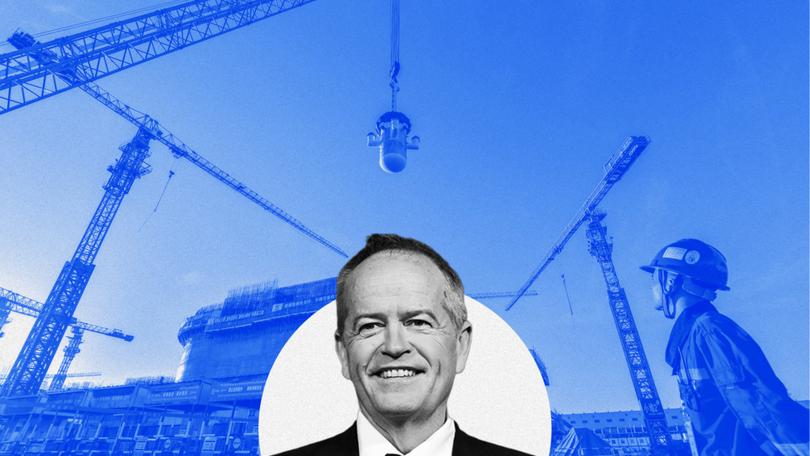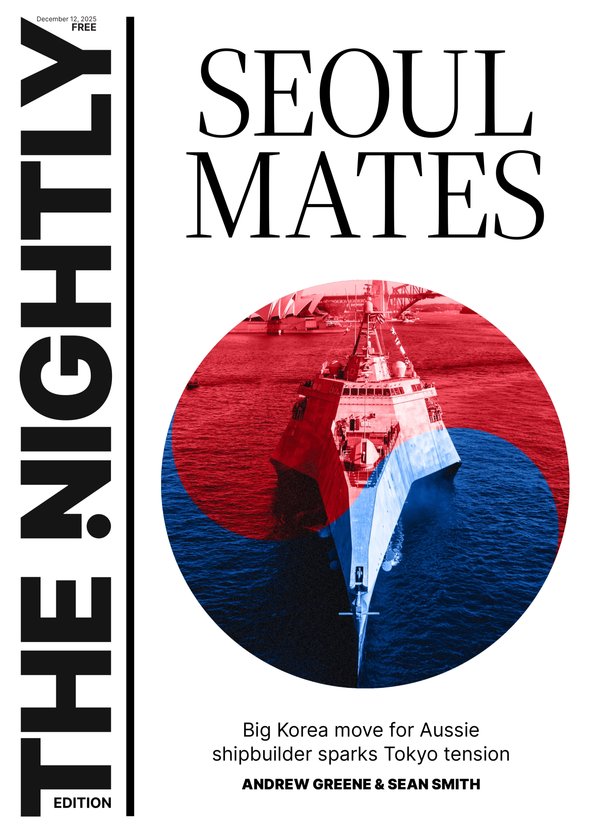BILL SHORTEN: Coalition’s case for nuclear just doesn’t stack up

I’m not sure if you caught my regular Friday morning spot on breakfast TV last week, where Opposition Leader Peter Dutton and I talk about politics.
Of course, the topic du jour was Peter Dutton’s Budget reply, which to be honest felt like a string of focus group word clouds; a show bag of slogans.
One thing that I questioned the Opposition Leader on was his claim that foreign buyers were the cause of the housing crisis.
Sign up to The Nightly's newsletters.
Get the first look at the digital newspaper, curated daily stories and breaking headlines delivered to your inbox.
By continuing you agree to our Terms and Privacy Policy.I pushed him on the fact that in the past two years, in fact, that fewer than 5000 established houses have been bought by foreign investors.
So, in the Opposition Leader’s estimation, freeing up 2500 houses a year would solve the housing shortage. Luckily the Albanese Government is not relying on Coalition math and will build 1.2 million new homes, starting from July this year, as part of our Homes for Australia Plan.
Mr Dutton also blamed international students for the rental crisis but when quizzed by the ABC 7.30’s Sarah Ferguson about the fact that only 4 per cent of international students are in the private rental market his reaction was: “Really? Well, where are they living, Sarah?”.
Is the Opposition Leader so out of touch that he’s never heard of student accommodation?
It is more and more apparent that Mr Dutton and the Coalition don’t let facts get in the way of their policy agenda.
They demand detail upon detail from the Government, but their own plans have more holes than the Titanic.
Their foray into the world of nuclear energy is another policy (the word policy is doing a lot of heavy lifting here) that is embarrassingly short on substance.
The Opposition Leader’s Budget reply omitted details like the total costs and locations of the six to seven nuclear power plants, touted as the replacements for coal-fired power stations due to be decommissioned.
The fully formed Coalition nuclear policy promised before the Budget last week did not eventuate.
The Coalition’s nuclear energy policy has been a journey that has taken us from small modular reactors, to large scale nuclear, and back to SMRs.
Now, I understand completely why Mr Dutton cannot give us too much detail about costings or the time it takes to build a SMR.
The fact is commercial SMRs do not exist.
The Coalition held up the example of a SMR power plant project in the US, the first commercial development of the technology, as evidence of a burgeoning global nuclear industry.
Guess what? The project was cancelled due to rising costs.
According to the OECD’s Nuclear Energy Agency there are only three SMRs in the world, and they were built by the Russian and Chinese governments, so there is no way of knowing the commercial cost to build and run one.
Nuclear power just doesn’t make sense — for investors or consumers.
Australia’s premier science and research organisation, the CSIRO, has said that even allowing for nuclear SMR capital costs to halve from where they are today, the cost in 2030 would be up to $382 a megawatt hour, compared to $83 per megawatt hour for renewables.
At a 2023 Senate inquiry into a Bill to remove the prohibition on nuclear power, Coalition senators accused the CSIRO of “misleading” the public on the cost of nuclear power generation, claiming it had not incorporated enough data in its modelling.
The problem, CSIRO representatives explained, was they can only use data from completed projects. Completed SMRs are rarer than unicorns.
As Prime Minister Albanese said this week, it looks like the Opposition is hiding details from the public because their plan “didn’t stack up”.
Nationals leader David Littleproud admitted over the weekend that the Coalition had polled Australians in areas where they planned to put the nuclear reactors.
The PM said this showed the Opposition “clearly has full knowledge of where these reactors will be built” but is keeping the rest of Australia in the dark.
Communities across Australia have voiced their opposition to building nuclear reactors near their homes.
That includes communities with former or current coal plants who want to embrace the opportunities of a Future Made in Australia and becoming a renewable energy superpower.
Another Coalition MP, Ted O’Brien, somehow conjured up experts (who strangely can’t be identified), willing to say that Australia could develop a nuclear power industry within a decade.
Federal Energy Minister Chris Bowen’s response was to quote that great Aussie philosopher Darryl Kerrigan — “Tell him he’s dreaming”.
Minister Bowen’s response is backed by GenCost, an annual collaboration between CSIRO and the Australian Energy Market Operator which was released on Wednesday.
The expert independent report said that the first full operation for small modular nuclear reactors “would be no sooner than 2040”, and years later for large-scale nuclear reactors.
Australia doesn’t have that time. Twenty-four coal plants announced their closures under LNP governments, and 90 per cent of Australia’s coal power will cease to exist by 2035.
The fact is the talk of nuclear energy ignores the tens of billions of dollars we have to spend before we get a single light bulb glowing.
The GenCost report confirmed that firmed renewables are the cheapest form of reliable energy in Australia now and to 2030.
And the good news, according to the Clean Energy Council, is that renewable energy provided 39 per cent of Australia’s total energy generation in 2023, up from 36 per cent in 2022.
Renewables are the future.
Wind, solar and hydro are readily available. They are cheap, safe, create jobs and make economic sense.
Since the Albanese Government came to office, there’s been a 25 per cent increase in renewables in the National Energy Market, and this has driven both its total emissions and emissions intensity to all-time record lows.
Why would we unnecessarily complicate our future energy needs when Australia has an abundance of natural resources that are ours for the taking?
